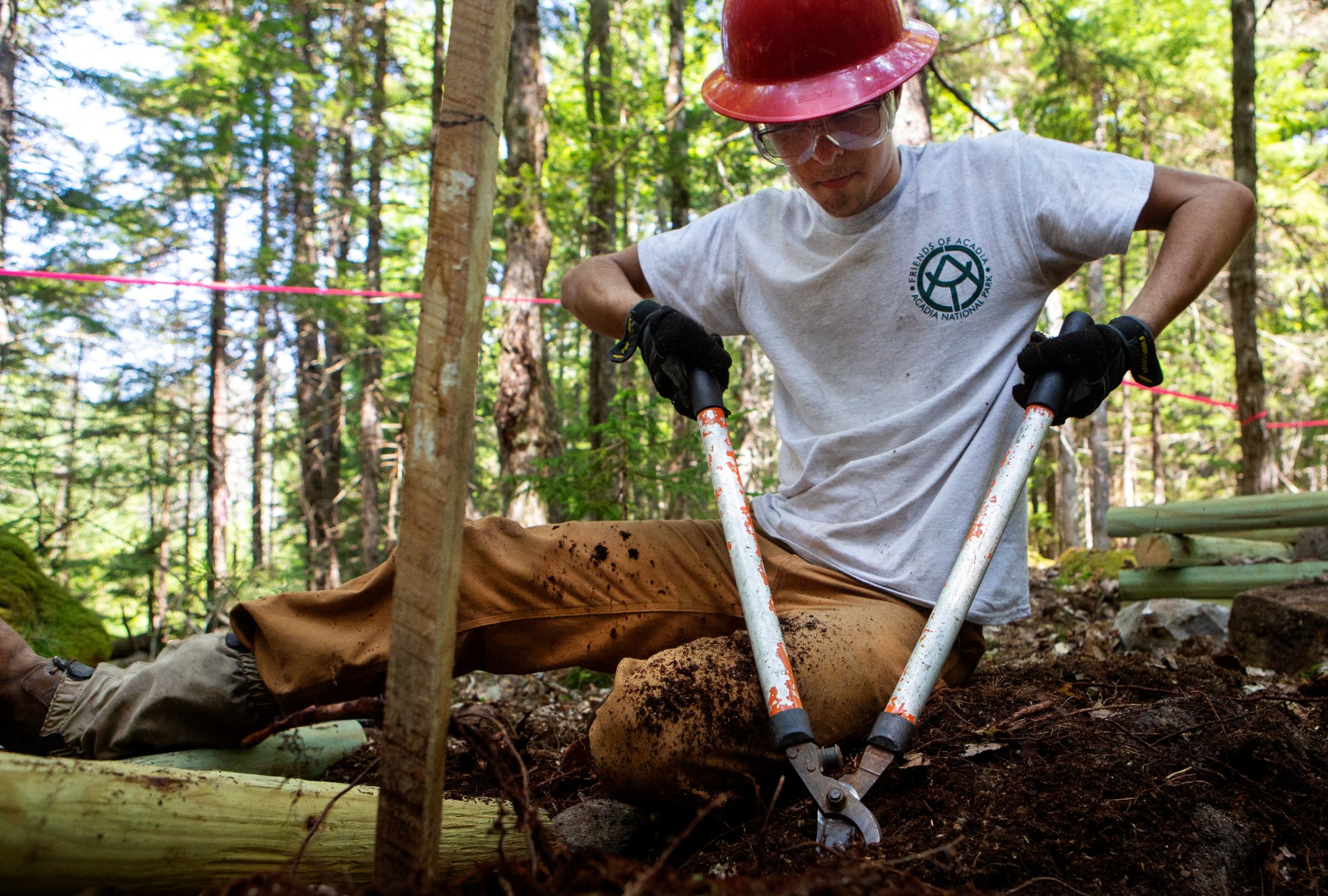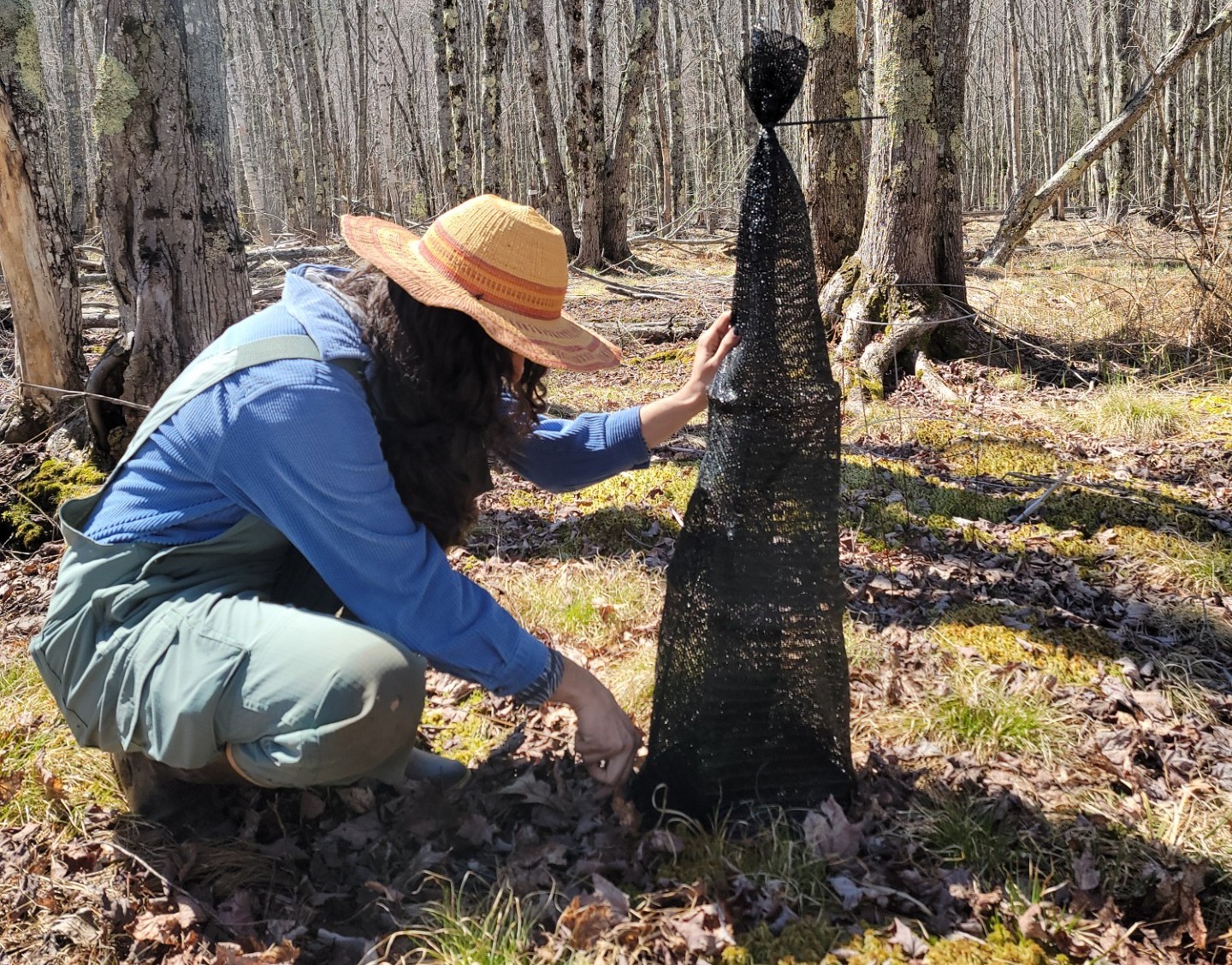Foliar Spray
Foliar herbicide applications involve spraying herbicide on the leaves, or foliage, of the plant and works well for large areas of invasives.
Glyphosate and triclopyr work well as foliar sprays. Use a backpack sprayer or handheld sprayer to coat the leaves of the target plant. Full coverage is key!
Applications can be made anytime during the growing season, but late summer and fall applications are often most effective.
This method often requires more than one application.
Cut and stump spray
A cut-stump application works well for large woody plants that are hard to dig or pull.
First, use shears or a handsaw to cut the woody plant off near the base. Then, use a spray bottle, paintbrush, or sponge to apply herbicide to the entire surface of the stump. Time is of the essence! Plants can seal off fresh wounds fast, so be sure to apply the herbicide as quickly as possible after making the cut.
Glyphosate and triclopyr work for cut-stump applications as well but are needed in higher concentrations. If using glyphosate, a concentration of at least 20% is needed, while 8% concentration is required if using triclopyr.
Applications can be made anytime during the growing season, but late summer and fall applications tend to be more effective.
If the stump resprouts, a cut-stump or foliar spray can be applied.

Tools
If you are planning to remove invasive plants using herbicide, here are a few tools you may want to have:
- Gloves
- Backpack sprayer
- Handheld spray bottle
- Sponge or paintbrush
- Protective clothing and eyewear
 Join
Join Donate
Donate Acadia National Park
Acadia National Park




 Pile it up!
Pile it up! 
 Burn it
Burn it  Solarization
Solarization 